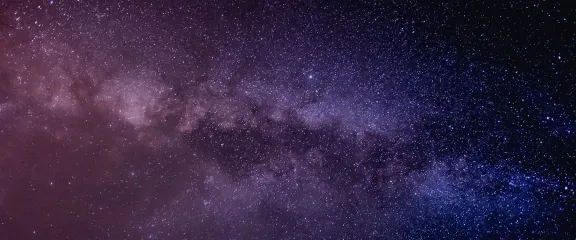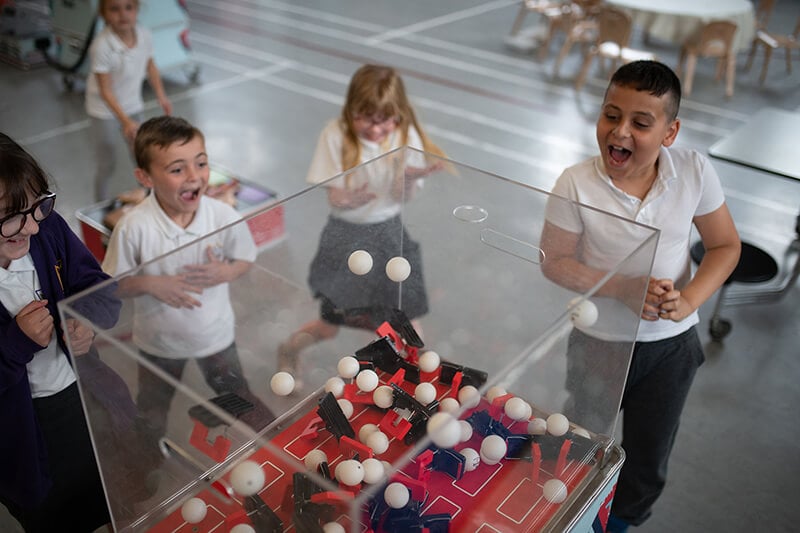How love is written in the stars

Steve Owens, astronomer at Glasgow Science Centre’s planetarium, explores some of the best sights in the heavens for Glasgow’s romantic stargazers this Valentine's Day. And he explains the unexpected reason that love really is written in the stars…
From star-crossed lovers Romeo & Juliet to Ross and Rachel’s infamous planetarium date, the idea of stars and romance is firmly entwined. If you have ever seen a blanket of stars stretching across the sky overhead, an untold number of glittering points of light, it’s not hard to see why. The breath-taking beauty of the night sky has bewitched lovers and the lovelorn alike. If you are venturing out this Valentine’s weekend, there is a sparkling jewellery box of stellar sights to see.
Planet of Love
One of the most brilliant things you can spot in the night sky isn’t actually a star at all. And if you want to see it, you’ll need to organise a romantic sunrise breakfast rather than a night under the stars. It is the aptly named ‘planet of love’ - Venus.
Venus gets her name from the Roman Goddess of love and beauty. Venus is frequently referred to as the Morning Star and if you are up early on Valentine’s Day, you will spot her shining brightly at around 8am. Venus is hundreds of times brighter than the brightest star in the sky and is at its brightest for 2022 around Valentine’s Day. If you look in the direction of the sunrise (always remember to take great care never to look directly at the Sun) you will see Venus, like a lantern hanging above the horizon. Venus might be associated with romance, but it certainly wouldn’t make a good spot for a romantic trip- it’s the hottest planet in the solar system.
Written in the stars
At the Planetarium, we are frequently asked if romantic fate is hitched to star signs Astronomers are concerned with the scientific study of the stars and don’t believe that stars hold any sway over our destiny. Love, however, is written in the stars in a different way.
In fact, one of the most epic love stories unfolds in the constellations above our heads every night until March when the story disappears from our Northern skies to reappear in early autumn.
It is the story of Perseus and Andromeda. Perseus depicts the Greek hero from a mythological tale full of monsters, daring rescues and romance. The story goes that Perseus slayed Medusa (the Gorgon with the snake hair. Medusa could turn you to stone with one glance). On his way home from this triumph, Perseus came across Princess Andromeda chained to a rock. Andromeda was fated to become a sacrifice to a sea-monster. Perseus killed the monster and freed Andromeda whom he then marries. Perseus and Andromeda are depicted side by side in the night sky, their love story outlined in stars for all time. If you are looking for a Valentine’s tale about enduring love, this one is hard to beat.
To find Perseus, look north. If you see a bright W in the sky, you have found the constellation of Cassiopeia. Cassiopeia was Andromeda’s mother and if you spot the W, Perseus will be to the left.
Perseus resembles a slightly wonky letter k in the night sky. The k depicts our hero striding across the heavens, a sword held high in one hand and the head of Medusa in the other hand. If your eye follows the tip of Perseus’ sword, it will lead you to the constellation of Andromeda. The legend goes that after Andromeda’s death, the goddess Athena put her in the sky to honour her memory.
You can see these sights from Glasgow but for a truly dazzling pin-sharp view of the night sky, you need to make your way to an area free from the city’s light pollution. On a clear night, you can enjoy some of the world’s finest dark skies just a two -hour drive away. Galloway Forest Park has been designated by the International Dark-Sky Association as a Dark Sky Park, 300 square miles of dark skies protected against light pollution".
Of course, regardless of weather you can always enjoy a perfect night sky by taking in a star show under the glittering skies of the planetarium dome at Glasgow Science Centre. There are even comfy seats. The heavens are certain to leave you starry-eyed whether you are celebrating Valentine’s Day or not.
Further Information
Written by Glasgow Science Centre's Steve Owens.
This blog post is adapted from an article that first appeared in Glasgow Times in February 2022.





